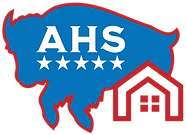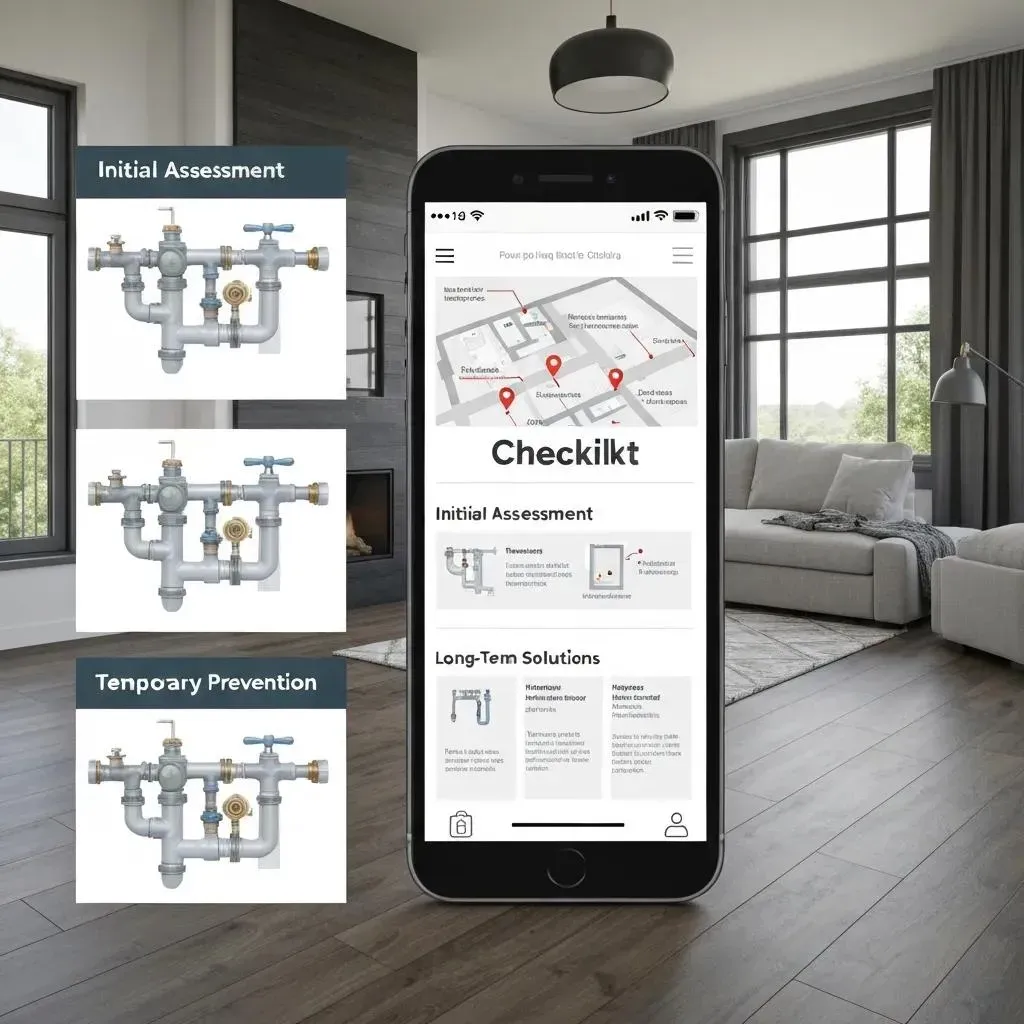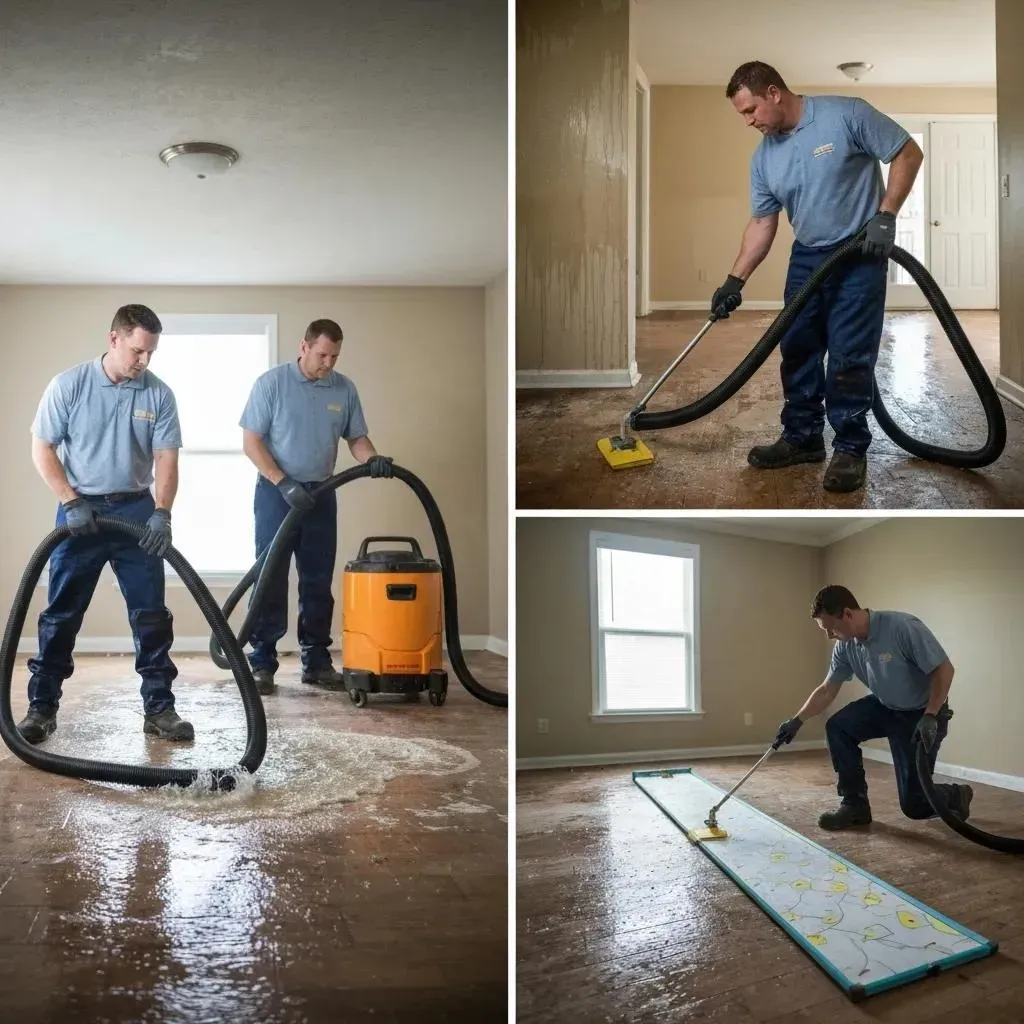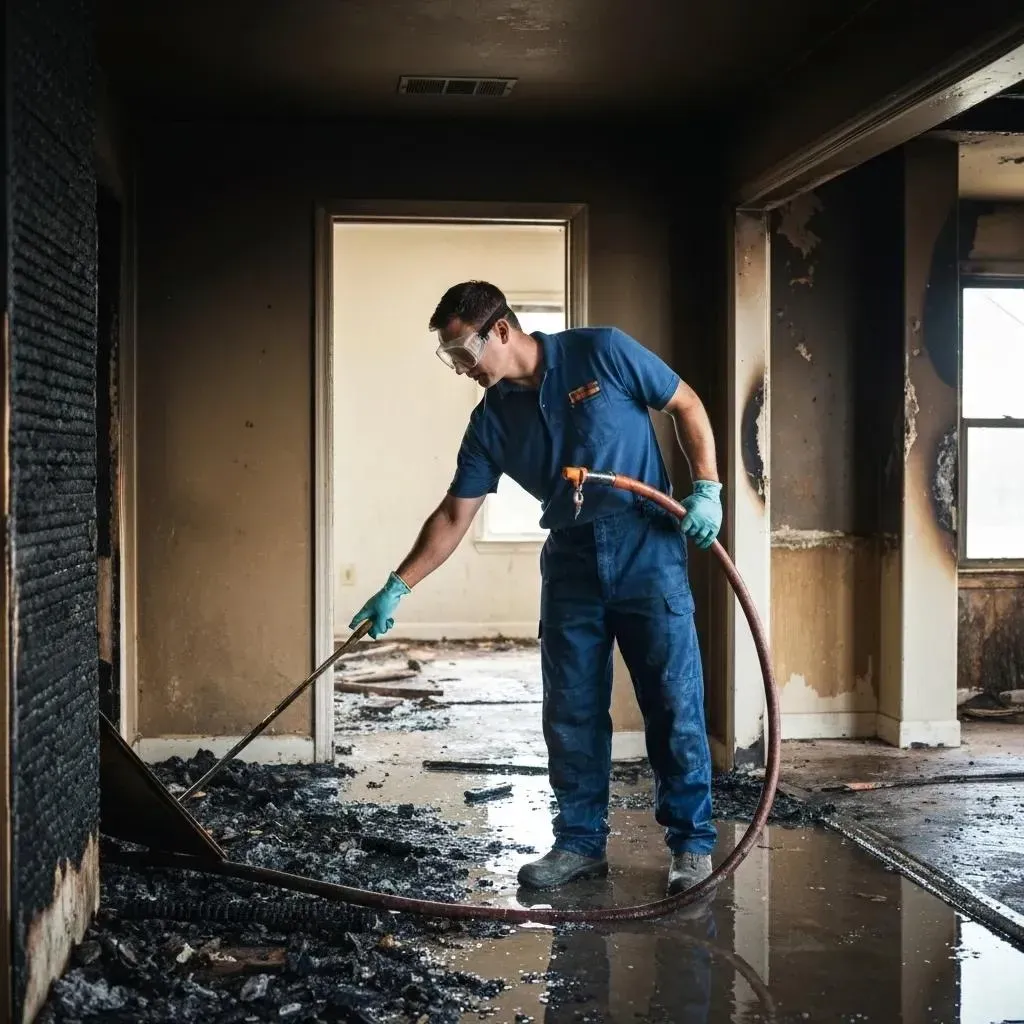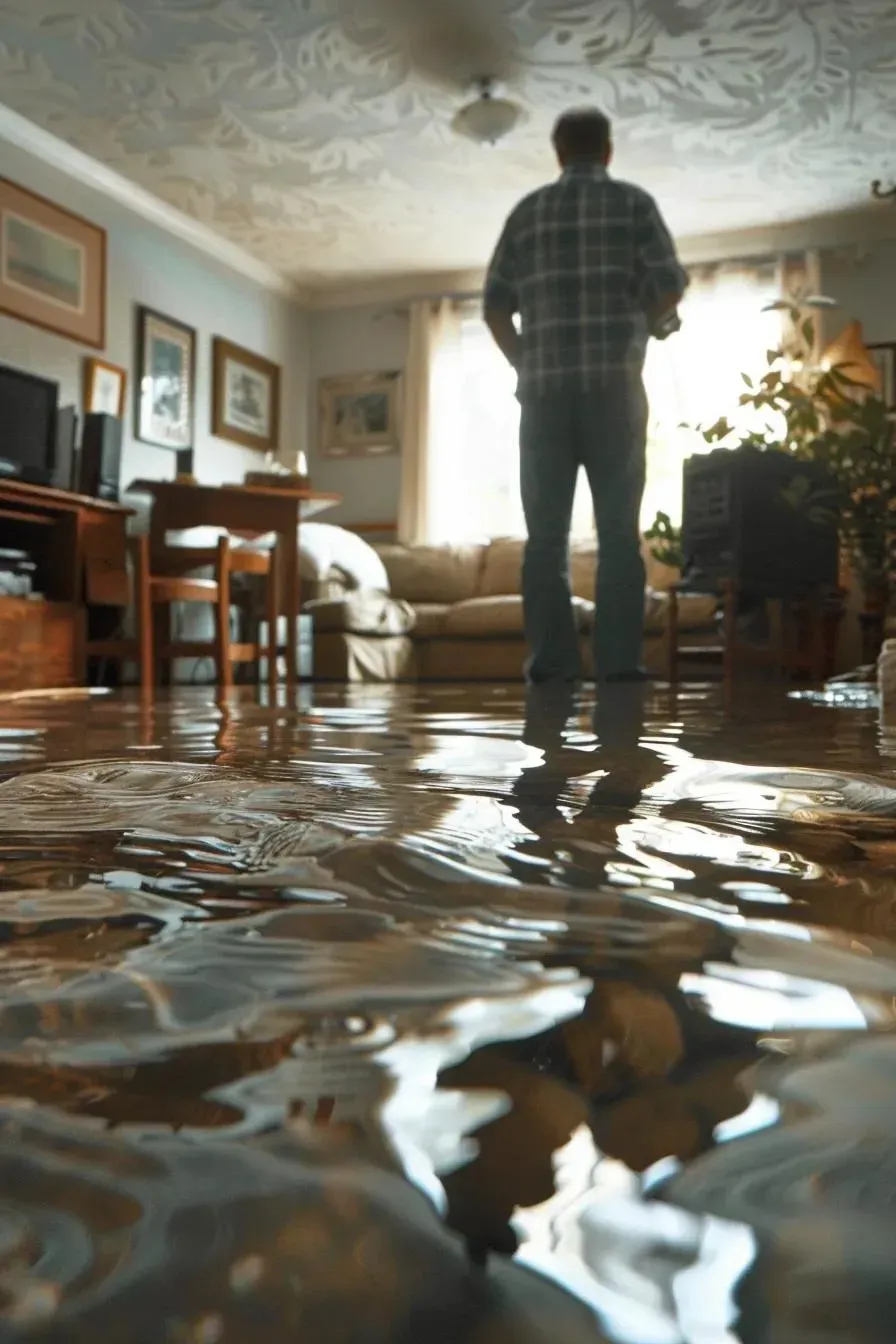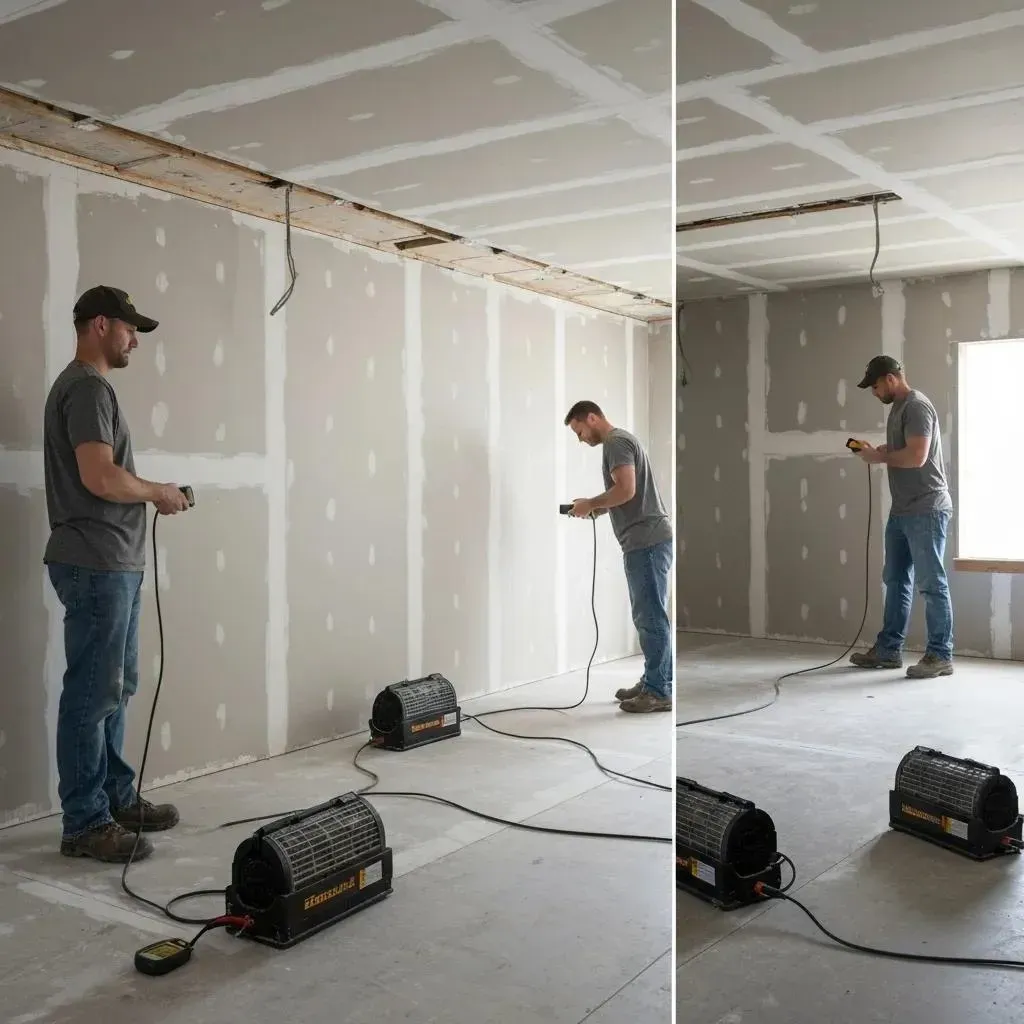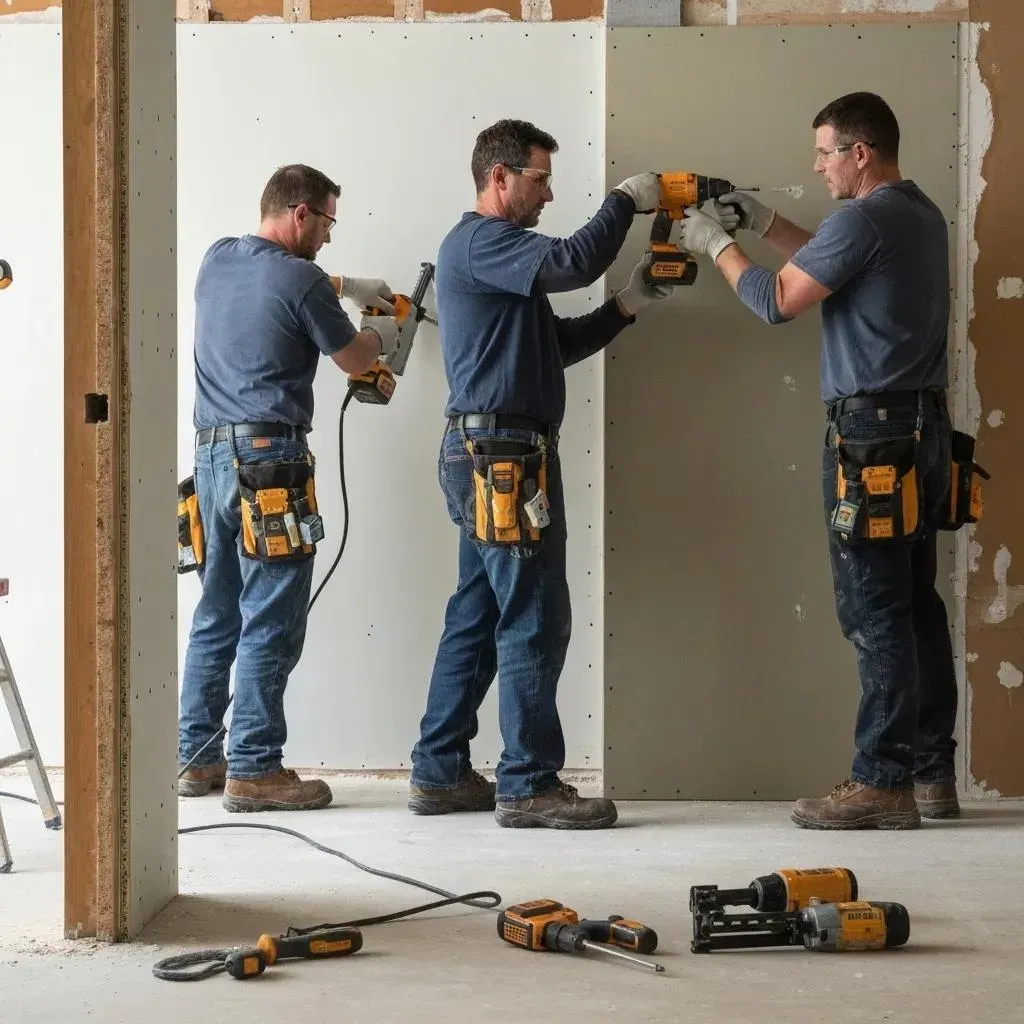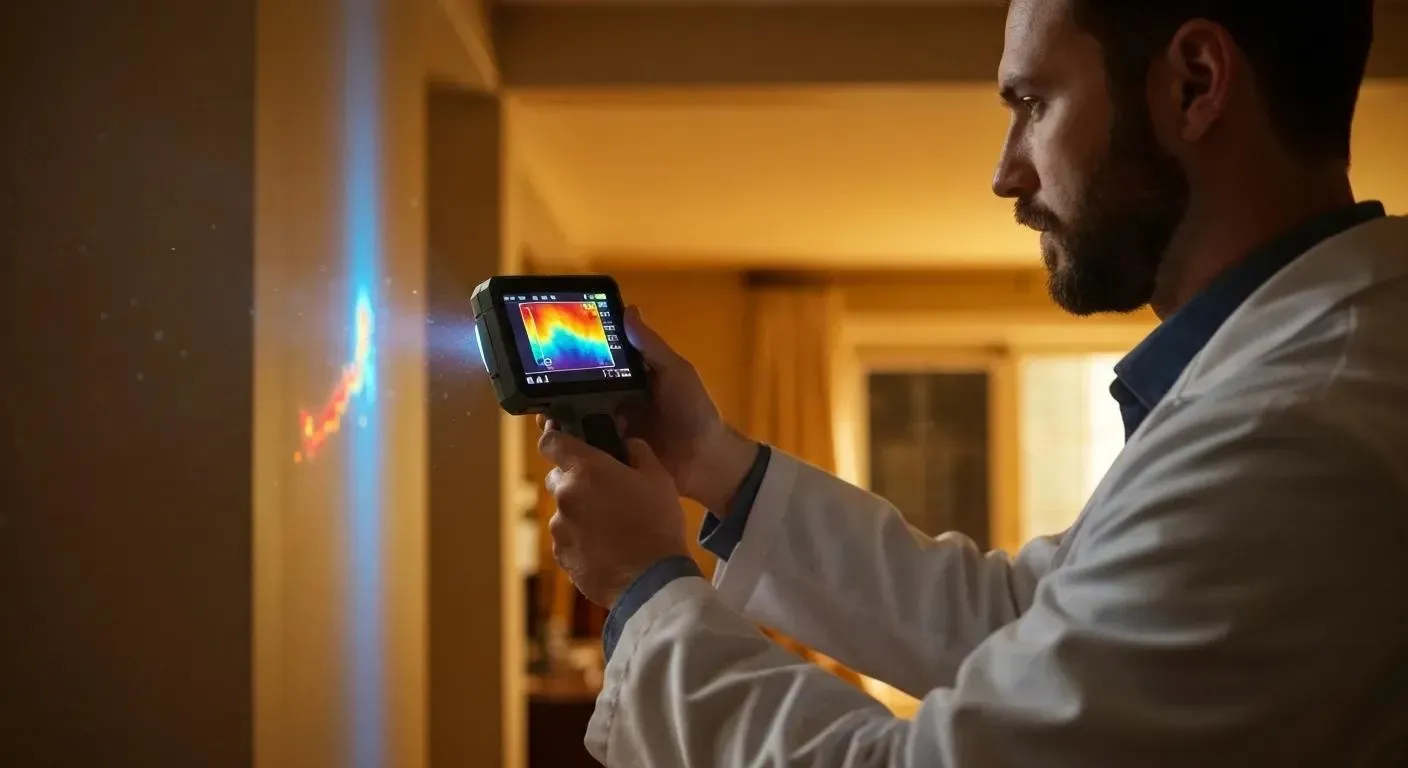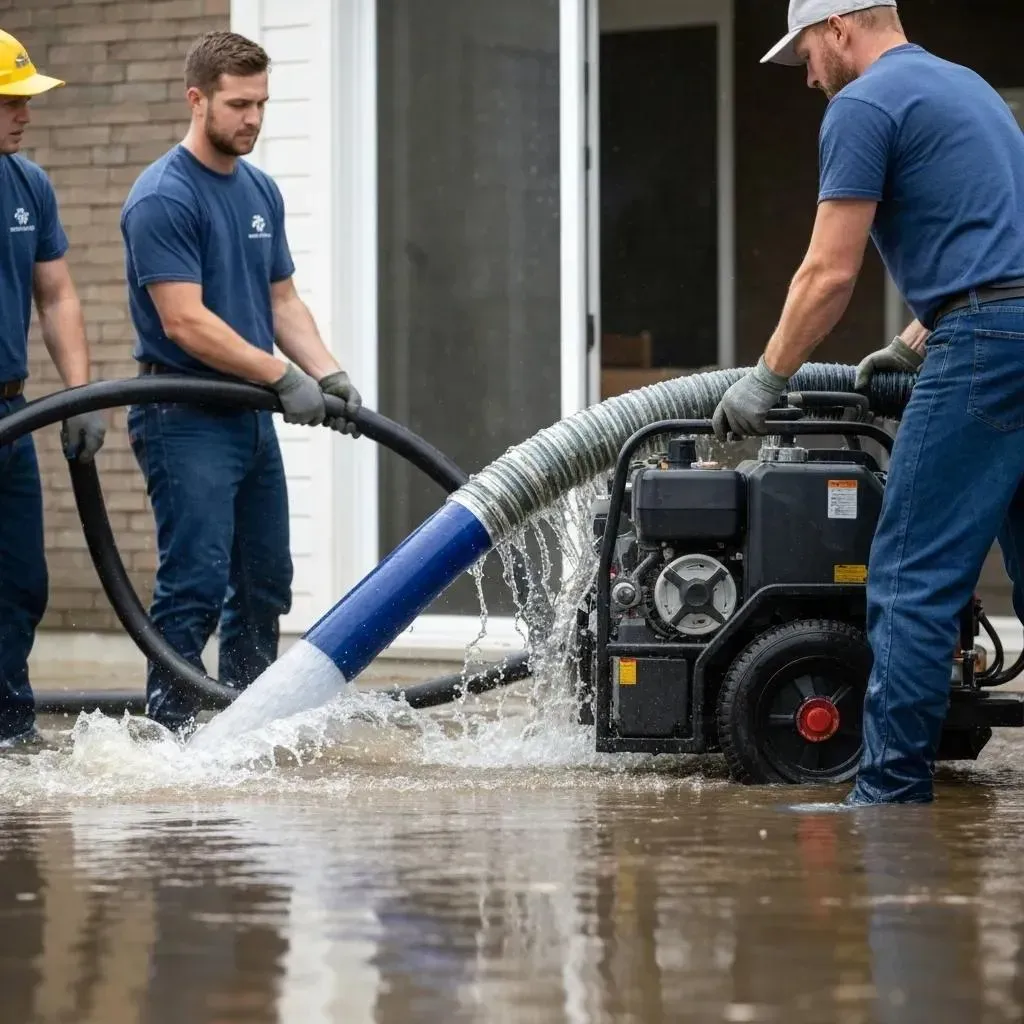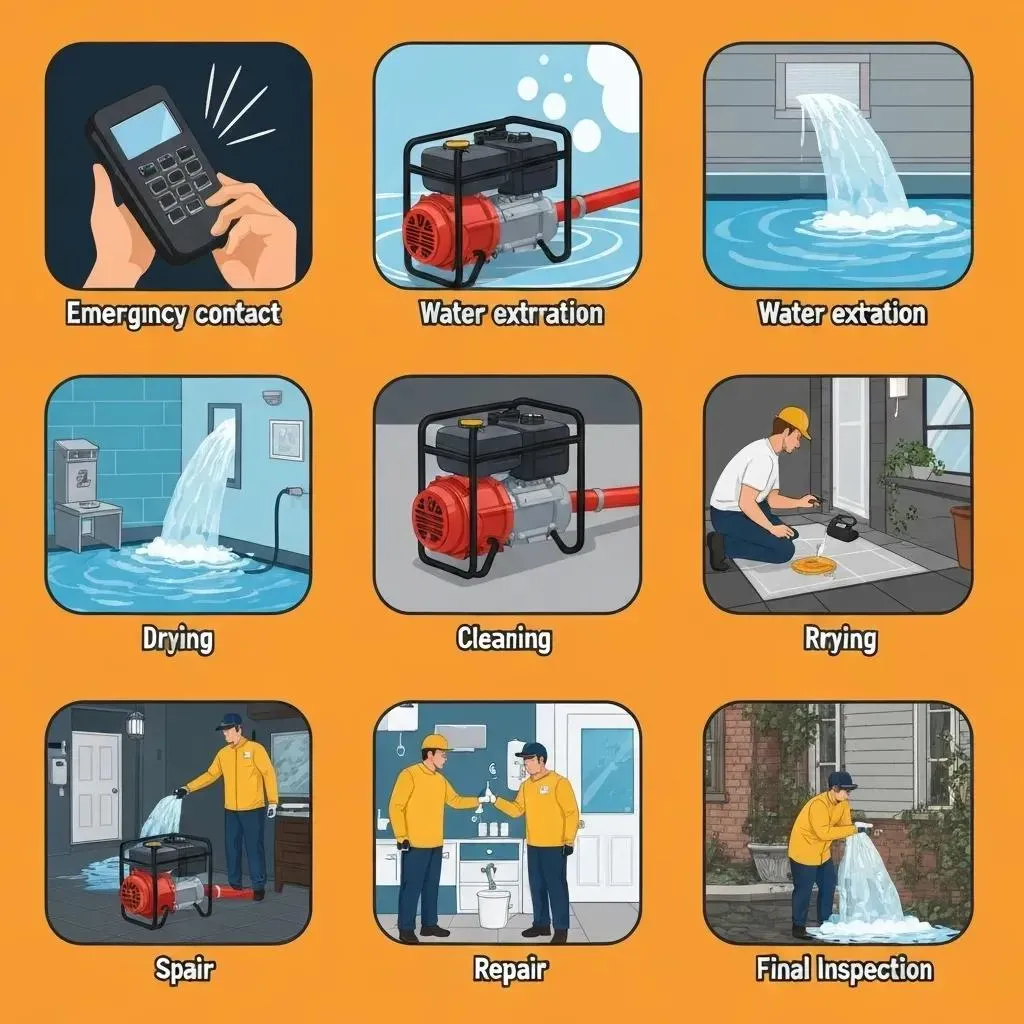Blog
When Disaster Strikes: Understanding Sewage Backup Emergencies
If you're facing a sewage backup in your home, here's what you need to know about sewage backup cleaning services:
- Response time: Professional cleanup should begin within 24-48 hours to prevent mold growth
- Health risk: Raw sewage contains harmful pathogens including E. coli, Salmonella, and Hepatitis A
- Professional equipment needed: Industrial-grade extractors, HEPA air scrubbers, antimicrobial treatments
- DIY risks: Improper cleanup can spread contamination and cause long-term health issues
- Average cost: Professional sewage backup cleaning typically ranges from $1,000-$4,000 depending on the extent of damage
A sewage backup cleaning service is more than just a convenience—it's an essential emergency response when wastewater flows in the wrong direction and enters your home. Whether it's coming up through your basement floor drain, backing up from a toilet, or seeping in from a broken sewer line, raw sewage presents immediate health hazards and requires professional intervention.
The clock starts ticking the moment sewage enters your home. Within 24 hours, bacteria multiply rapidly, contaminating surfaces and releasing toxic gases. By 48 hours, mold begins to develop in damp areas, and structural materials like drywall and wood start to deteriorate. This isn't just an unpleasant mess—it's a biohazard situation that demands prompt attention.
I'm Mike Martinez, owner of Accountable Home Services, with over two decades of experience providing sewage backup cleaning services throughout Denver and the surrounding areas, including specialized training in biohazard remediation and IICRC certification in water damage restoration.
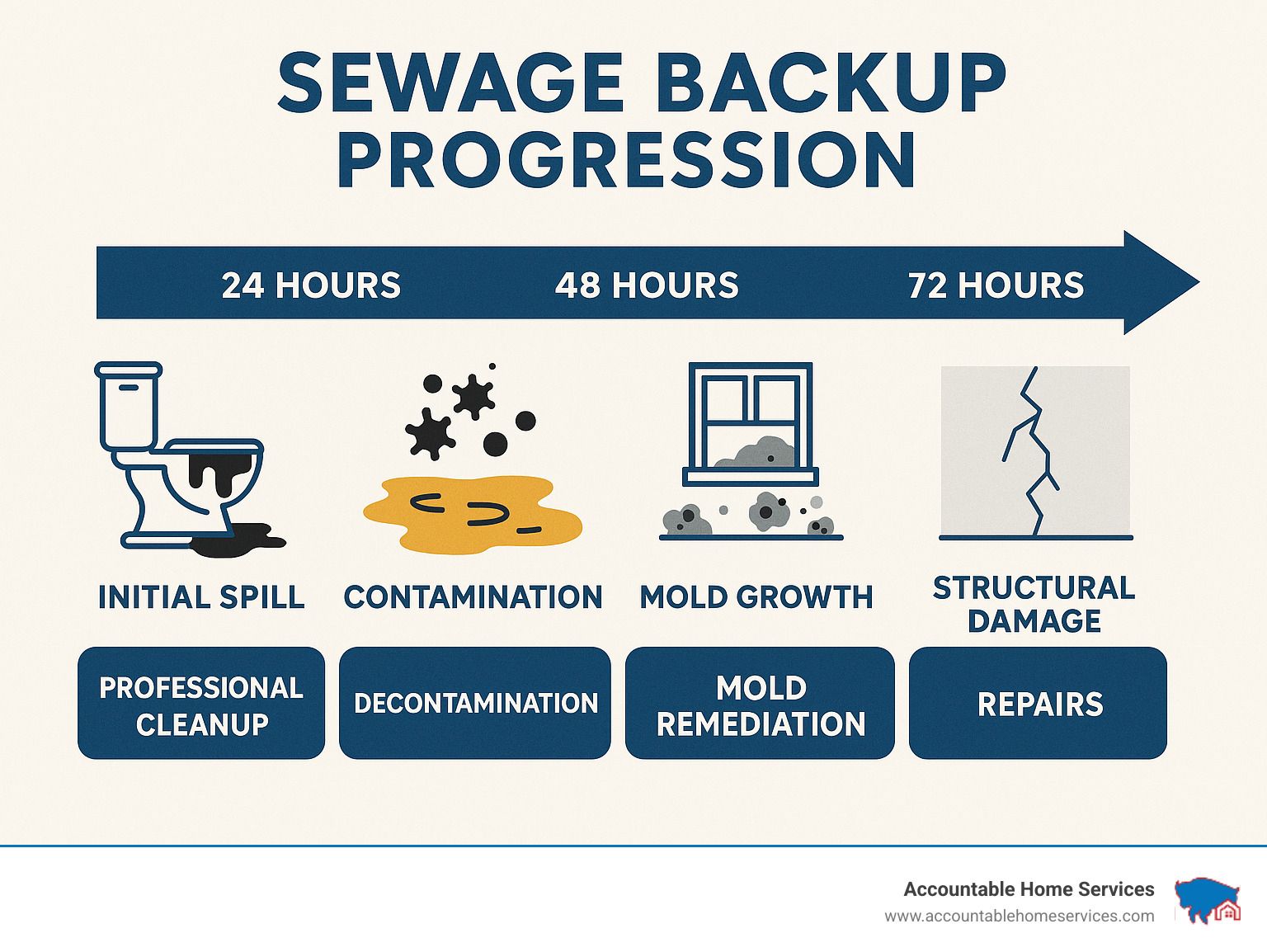
The body content of your post goes here. To edit this text, click on it and delete this default text and start typing your own or paste your own from a different source.
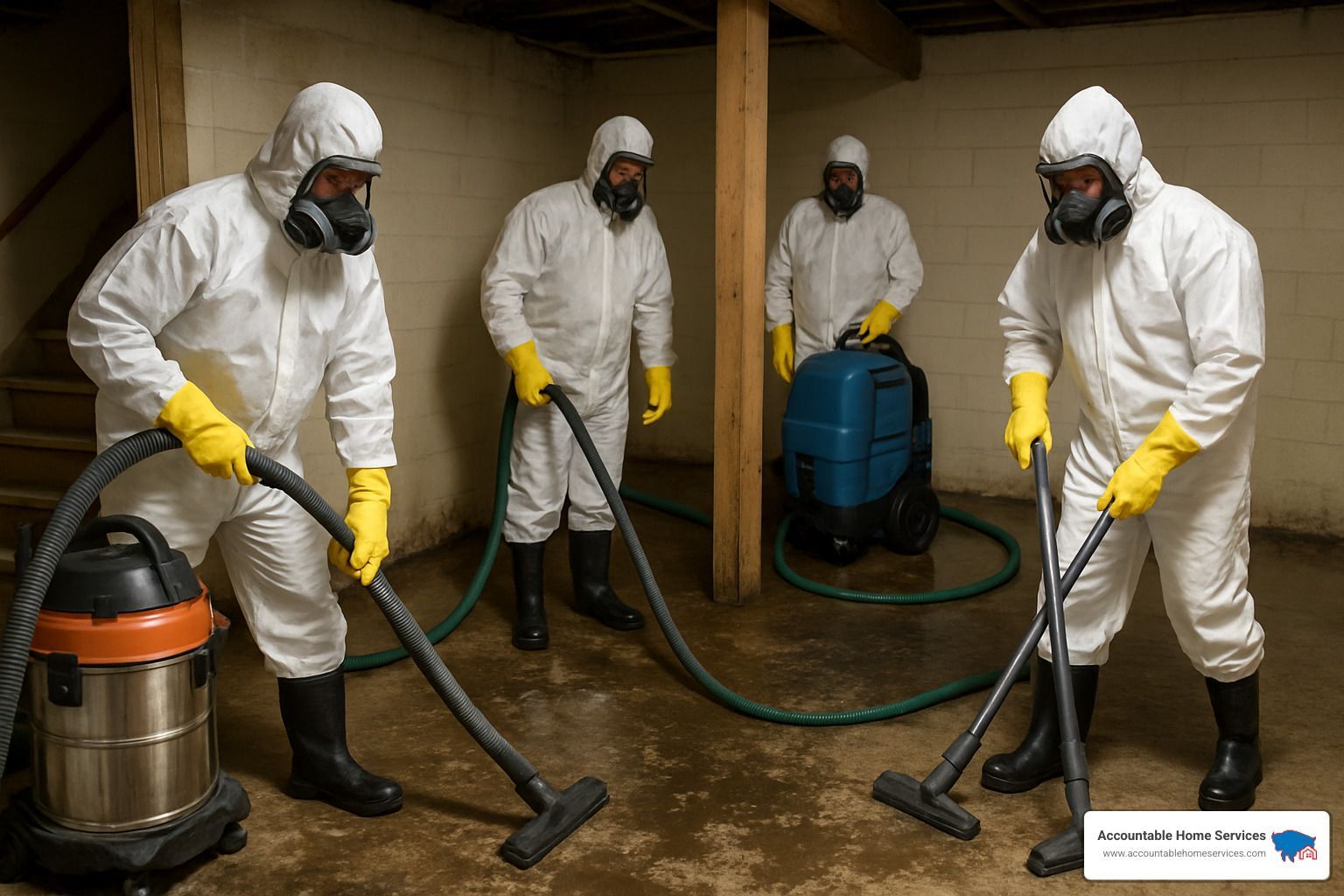
Insurance and Liability Protection
Working with professional sewage backup cleaning services provides important protections beyond the physical cleanup. We provide detailed documentation for insurance claims, including assessment reports, photos, and professional estimates that help maximize your coverage.
Our company carries comprehensive insurance that protects both you and your property throughout the remediation process. And unlike fly-by-night operations or DIY attempts, we stand behind our work with solid warranties.
Health Risks You Can't See
The real dangers of sewage exposure lurk far beyond what's visible to the naked eye. That black water contains over 400 types of harmful microorganisms—bacteria like E. coli and Salmonella, viruses including Hepatitis A and norovirus, parasites such as Giardia, and various mold species that can cause serious respiratory issues. For a deeper look at these hazards, the Centers for Disease Control and Prevention (CDC) offers comprehensive guidance on sewage-related health risks and safe cleanup practices.
These invisible threats can enter your body through multiple pathways—accidental ingestion, inhalation of aerosolized particles, absorption through skin (especially if you have cuts), or even injection via puncture wounds from contaminated objects.
"One of the most overlooked dangers is aerosolized bacteria," notes our remediation specialist. "When sewage dries, microscopic particles become airborne and can be inhaled, potentially causing serious respiratory infections."
The health consequences can be both immediate and long-lasting. Many Denver families have faced chronic respiratory problems, recurring skin infections, persistent gastrointestinal issues, and compromised immune function after improper sewage cleanup.
Cost & Timeline of Sewage Backup Cleaning Services
I'm often asked, "What's this going to cost me?" and "How long until my home is back to normal?" The honest answer is: it depends on several factors.
The cost of professional sewage cleanup varies based on the extent of contamination, category of water, affected materials, structural damage, and duration of exposure. For most Denver area homes, sewage backup cleaning services typically range from $1,000 to $4,000, though extensive damage can increase costs.
The good news? Most homeowners insurance policies cover sewage backups if you have the appropriate riders or endorsements. We work directly with insurance companies to make the claims process as painless as possible.
As for timeline, here's what most homeowners can expect:
We'll have emergency responders at your door within 1-4 hours of your call. The initial cleanup and extraction typically takes 1-2 days, followed by 2-5 days of drying and dehumidification. Sanitization and odor treatment requires another 1-2 days, with reconstruction varying based on the extent of damage (typically 1-2 weeks).
"The 24-72 hour window is critical," emphasizes our operations manager. "After 72 hours, mold growth becomes established, requiring additional remediation steps and significantly increasing costs."
When sewage invades your home, every hour counts. Professional help isn't just a convenience—it's your best defense against serious health risks and costly property damage.
The Professional Sewage Cleanup Process Explained
When sewage invades your home, having a clear understanding of how professionals tackle this messy situation can bring peace of mind. At Accountable Home Services, we've refined our sewage backup cleaning services process to be thorough, efficient, and most importantly, effective at restoring your home to a safe, clean condition.
1. Emergency Assessment and Planning
The moment our team arrives at your home, we hit the ground running with a comprehensive evaluation.
"We take a methodical approach to assessment," explains our project manager. "Using moisture meters and thermal imaging, we can detect hidden moisture that might not be visible to the naked eye, preventing future problems."
Our initial assessment includes identifying exactly what type of contamination we're dealing with, measuring how far it's spread (including those sneaky hidden areas), and documenting pre-existing conditions for your insurance claim. We'll create a detailed remediation plan and provide you with a clear estimate that you can submit to your insurance company.
2. Containment and Initial Disinfection
Before we start removing anything, we need to make sure the contamination doesn't spread to unaffected areas of your home. Think of it as creating a biohazard bubble around the problem.
We set up physical barriers with plastic sheeting and establish negative air pressure using HEPA filtration systems – this ensures air flows into the contaminated area rather than out of it. Then we apply EPA-registered disinfectants to start neutralizing those harmful pathogens immediately, while establishing clean zones where our technicians can safely move in and out.
3. Sewage and Water Extraction
Now comes the heavy lifting. Using truck-mounted extraction units with serious suction power, we remove standing water and solid waste. This equipment is worlds apart from any wet-vac you might have in your garage – our industrial systems can extract water from deep within materials, not just surface water.
All sewage is disposed of following strict environmental regulations, and we begin the process of cleaning and sanitizing all affected surfaces that can be salvaged.
4. Removal of Unsalvageable Materials
This is often the hardest part for homeowners to accept, but certain items simply cannot be safely cleaned after sewage exposure.
"One of the hardest conversations we have with homeowners is explaining what can't be saved," notes our content cleaning specialist. "But keeping contaminated porous materials creates ongoing health risks that simply aren't worth taking."
Items that typically need to be removed include carpet and padding exposed to Category 3 water, damaged drywall and insulation, particleboard furniture, paper products and books, and heavily contaminated upholstered furniture. We'll carefully document everything removed for your insurance claim.
5. Cleaning and Sanitizing Salvageable Items
Not everything needs to be tossed! For items that can be saved, we employ a variety of specialized cleaning techniques. Hard surfaces get treated with specialized detergents followed by hospital-grade disinfectants. Some materials respond well to steam cleaning, while delicate non-porous valuables might undergo ultrasonic cleaning. Throughout this process, we document all cleaning procedures for your insurance company.
6. Structural Drying and Dehumidification
Proper drying is absolutely critical to prevent mold and secondary damage.
"Complete drying is essential," emphasizes our drying specialist. "Even small amounts of remaining moisture can lead to mold growth and structural issues down the road."
We strategically place professional air movers and commercial dehumidifiers throughout the affected area, monitoring moisture levels daily. We control the temperature to optimize drying conditions and keep detailed documentation of the drying progress – this isn't just about feeling dry to the touch, but ensuring materials are truly dried to safe levels.
7. Final Sanitization and Odor Treatment
Once everything is completely dry, we perform a comprehensive final cleaning. This includes antimicrobial treatments to prevent future mold and bacterial growth, odor neutralization using hydroxyl generators or ozone treatment depending on your situation, and HEPA vacuuming of all surfaces.
We conduct ATP testing – a scientific method that detects biological material at the microscopic level – to verify surfaces are truly clean, not just appearing clean.
8. Reconstruction and Restoration
The final step is bringing your home back to its pre-disaster condition. Our team handles replacement of removed materials like drywall and flooring, painting and finishing, fixture installation, and a thorough final cleaning. We conclude with a detailed walkthrough with you to ensure everything meets your expectations.
Step-by-Step Walkthrough With Sewage Backup Cleaning Services
To give you a clearer picture, here's a real-world example from one of our recent projects in Thornton:
"We responded to a call from a homeowner whose main sewer line had backed up, flooding their finished basement with about two inches of sewage," recalls our project manager.
The basement was approximately 800 square feet of finished space, including carpeting, drywall, and a bathroom – all affected by Category 3 contamination. Our team immediately sealed off the basement from the rest of the home using plastic barriers and established negative air pressure to prevent cross-contamination.
Using our truck-mounted equipment, we extracted all standing sewage and solid waste, then removed the contaminated carpet, padding, baseboards, and the lower two feet of drywall in all affected areas. Every remaining hard surface was thoroughly cleaned and disinfected multiple times.
For the drying phase, we installed 12 air movers and two commercial dehumidifiers, monitoring moisture levels daily for four days until everything was completely dry. Once dry, the entire area received antimicrobial treatment and odor neutralization.
The final reconstruction phase included replacing drywall, installing new carpet and padding, painting, and restoring the basement to its pre-loss condition. The entire process took 12 days from initial call to completed restoration, and the homeowner's insurance covered most of the $7,200 cost.
Equipment Spotlight
What truly sets professional sewage backup cleaning services apart is our specialized equipment:
Our truck-mounted extractors can remove 25-100 gallons of water per minute – far more powerful than any rental unit. We use thermal imagers to detect temperature differences that reveal hidden moisture behind walls or under floors, paired with moisture meters that provide precise readings of moisture content in various materials.
For challenging environments, our desiccant dehumidifiers use chemical agents to remove moisture more effectively than conventional units. Negative-air machines create pressure differentials that prevent cross-contamination while filtering air through HEPA filters. And our ATP meters detect biological material at the microscopic level to verify surfaces are truly sanitized.
"The difference between professional equipment and consumer-grade alternatives isn't just a matter of degree—it's a completely different level of capability," explains our equipment specialist. "Our truck-mounted extraction systems create powerful vacuum that can pull water from deep within structural materials, not just from the surface."
This professional-grade equipment, combined with our expertise and systematic approach, ensures your home is not just visually clean after a sewage backup – but truly safe for you and your family.
Preventing Future Sewage Disasters & FAQs
Let's face it—dealing with one sewage backup is enough for a lifetime. As I've seen working with hundreds of Denver homeowners, prevention truly is worth every penny. While our sewage backup cleaning services can certainly restore your home after disaster strikes, I'd much rather help you avoid the problem altogether.
Proactive Prevention Strategies
The best defense against sewage backups starts with smart home maintenance. For Denver homes, especially those in older neighborhoods like Washington Park or Capitol Hill, installing a backwater valve is practically essential. These clever devices prevent sewage from flowing backward into your home during heavy rains or municipal sewer overloads.
"This is the single best investment I've seen homeowners make," notes our plumbing consultant. "Especially in older Denver neighborhoods with combined storm and sanitary sewer systems, a backwater valve can be the difference between a dry basement and a biohazard disaster."
Annual camera inspections of your sewer line might seem like an unnecessary expense—until you catch root intrusion or pipe corrosion before it creates a full blockage. These preventive inspections typically cost $150-300, compared to thousands for emergency sewage backup cleaning services.
Your daily habits matter tremendously too. Despite what packaging claims, those "flushable" wipes aren't truly flushable—they're one of the leading causes of backups we see. The same goes for feminine hygiene products, paper towels, and cooking grease. A simple rule: if it isn't toilet paper or human waste, it doesn't belong in your toilet.
Smart landscaping decisions protect your sewer lines as well. Those beautiful willow trees with their invasive root systems? Plant them far from your sewer line. Direct downspouts away from your foundation, ensure your yard slopes away from your home, and consider French drains in problem areas.
I remember working with a Broomfield family who had suffered through three sewage backups in five years. After installing a backwater valve and replacing a section of their sewer line that had been invaded by tree roots, they've enjoyed seven years without a single problem. Prevention works.
Consider Flood Insurance
Here's a shocking reality many homeowners find too late: standard homeowners insurance policies typically don't cover sewage backups without specific endorsements.
Adding sewer backup coverage to your existing policy usually costs between $50-250 annually—a tiny fraction of what you'd pay out-of-pocket for professional sewage backup cleaning services. If you live in a flood-prone area like parts of Lakewood or Aurora, a separate flood insurance policy might be worthwhile too.
"Many homeowners are absolutely stunned to find their standard policy excludes sewage backup coverage," our insurance specialist often says. "That moment of realization usually comes at the worst possible time—when they're standing ankle-deep in sewage."
Document all your preventive maintenance efforts too. Those annual camera inspection reports and receipts for backwater valve installations aren't just for your records—they might help support your insurance claim if disaster does strike.
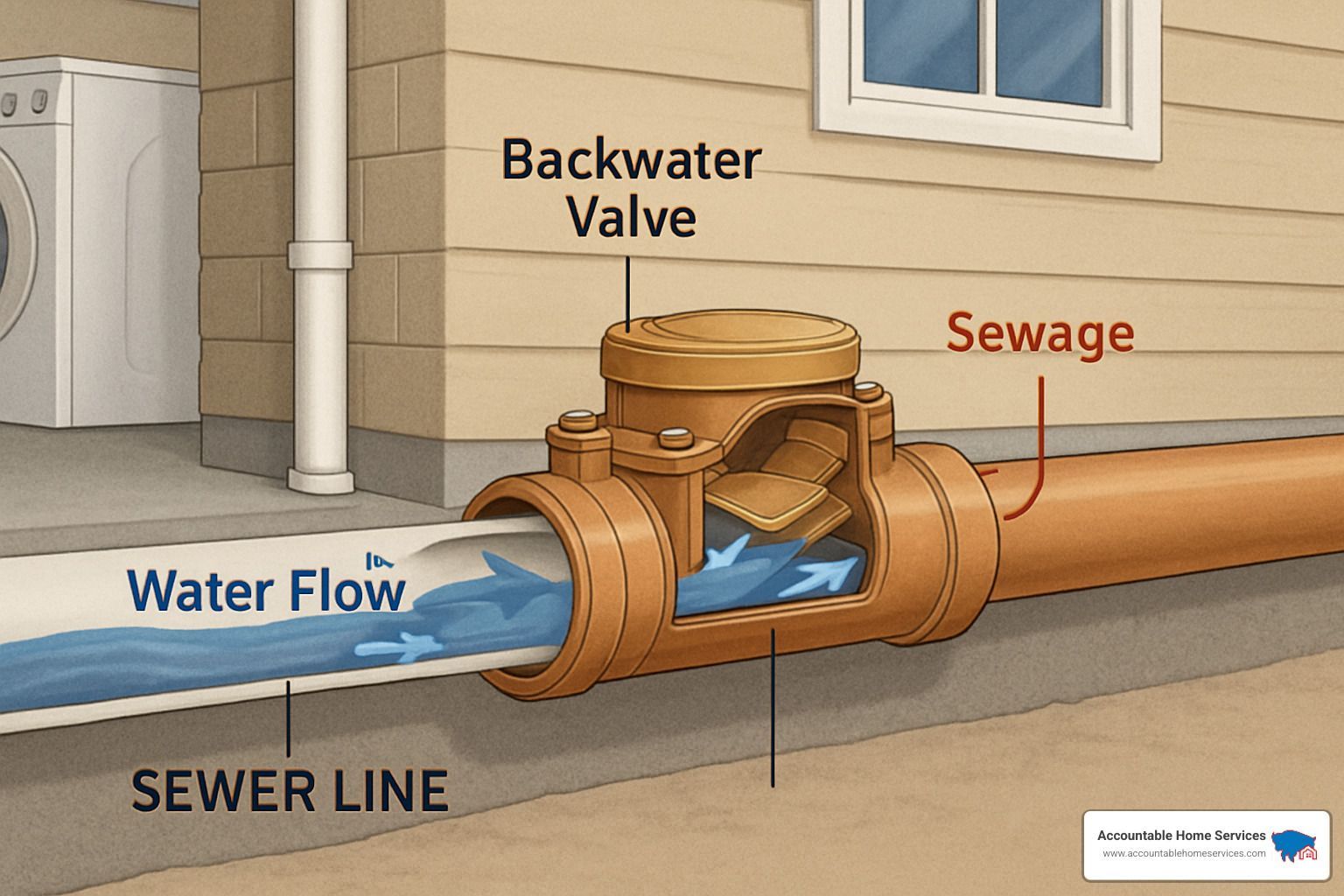
Frequently Asked Questions About Sewage Backup Cleaning Services
1. How fast should cleanup start after a backup?
The clock starts ticking immediately. Professional cleanup should begin within 24 hours, though sooner is always better. After just one day, bacterial growth accelerates dramatically, and by the 48-hour mark, mold begins establishing itself in damp materials. I've seen the difference between homes where we started within hours versus those where homeowners waited a few days—the difference in damage (and cost) is substantial.
2. Will homeowners insurance cover the damage?
This depends entirely on your specific policy. Most standard homeowners insurance doesn't automatically cover sewage backups unless you've added a specific endorsement or rider. Some policies cover the resulting damage but not the cause—they might pay for water damage restoration but not the sewer line repair that started the problem. At Accountable Home Services, we work directly with your insurance company to help maximize your coverage and minimize your out-of-pocket expenses.
3. What items can be salvaged versus tossed?
This is often the hardest conversation we have with homeowners. Generally, non-porous items like hard plastics, glass, metal, and sealed wood can be professionally cleaned and disinfected. Unfortunately, porous materials that have absorbed sewage—carpets, padding, upholstered furniture, mattresses, particleboard furniture, and paper products—typically cannot be adequately sanitized and should be discarded. Sentimental items require case-by-case evaluation, and we always try to save what safely can be saved.
4. How do you eliminate sewage odors?
That distinctive sewage smell isn't just unpleasant—it's a sign of continuing contamination. Complete odor elimination requires a systematic approach: removing the source of contamination, thorough cleaning with specialized detergents, proper application of hospital-grade disinfectants, complete drying, and often the use of air scrubbers, hydroxyl generators, or ozone treatments. Simply masking odors with air fresheners is not only ineffective but potentially dangerous, as it can hide ongoing problems.
5. Can I stay in my home during sewage cleanup?
Safety comes first. For minor, contained backups, you might be able to remain in your home if the affected area can be completely sealed off from living spaces. For significant backups, especially those affecting HVAC systems or multiple rooms, temporary relocation is strongly recommended for health safety. We can help coordinate with your insurance for temporary housing arrangements when necessary.
6. How do you ensure all contamination is removed?
We leave nothing to chance. Our technicians use a combination of visual inspection, moisture meters, thermal imaging, and ATP testing. ATP (adenosine triphosphate) testing is particularly valuable because it detects biological material at a microscopic level. This allows us to verify surfaces are truly clean and sanitary, not just visually clean. This scientific approach ensures we don't miss hidden contamination that could cause problems later.
7. What causes sewage to back up during rainstorms?
This is especially common in Denver's older neighborhoods. Heavy rainfall can quickly overwhelm municipal sewer systems, particularly in areas with combined storm and sanitary sewers. When these systems reach capacity, water backs up through the lowest entry points in your home—typically basement floor drains or lower-level fixtures. Installing a backwater valve is the most effective prevention method for this specific problem.
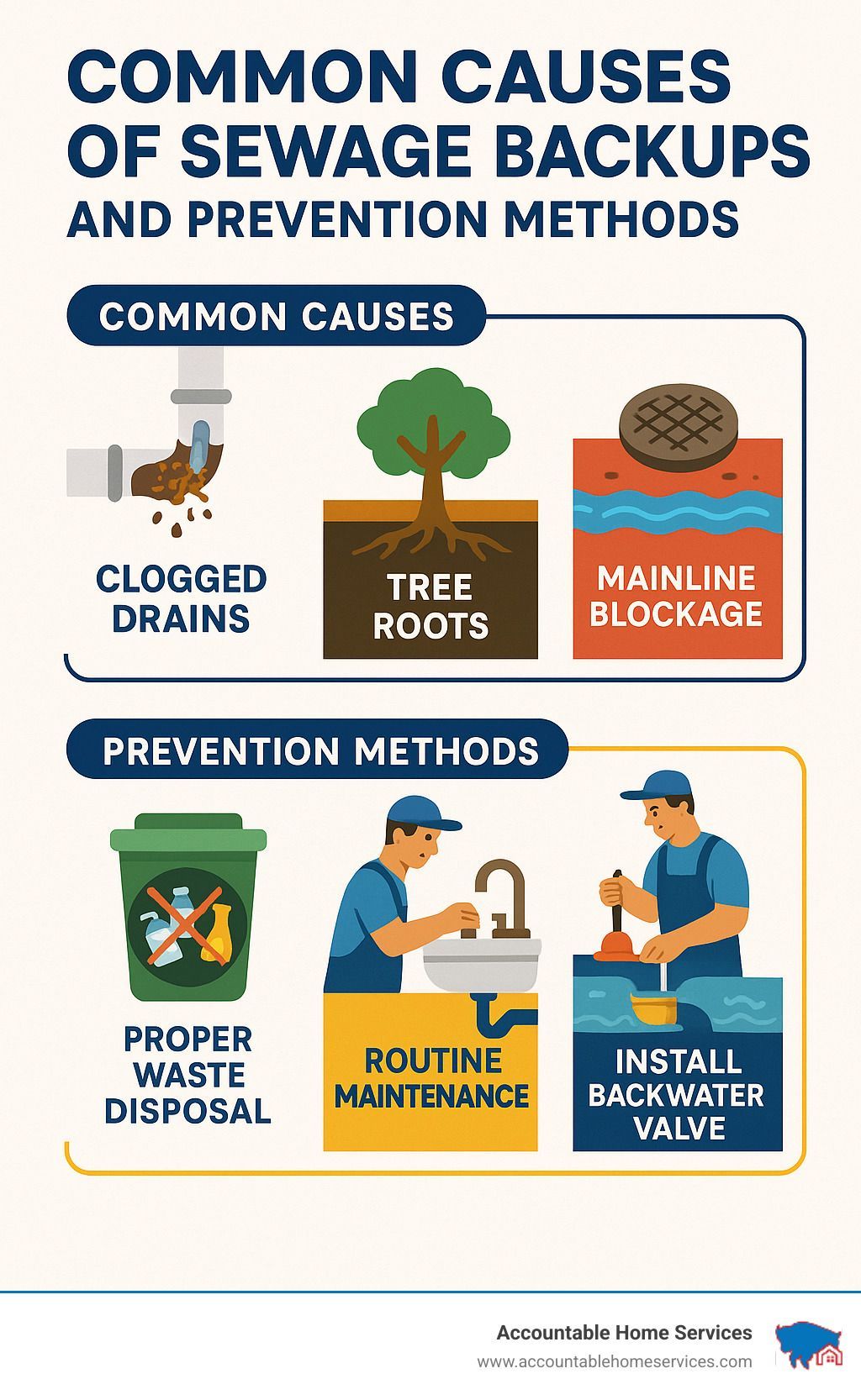
Conclusion
When sewage invades your home, you're not just facing an unpleasant mess—you're dealing with a serious health hazard and potential structural nightmare. After helping hundreds of Denver families recover from these disasters, I've seen how professional sewage backup cleaning services make the difference between a quick recovery and lingering problems that can affect your family's health for years.
What starts as "just water" can quickly escalate into something much worse. Within hours, bacteria multiply exponentially. By day two, mold begins establishing colonies in damp materials. And by day three, structural damage begins as wood swells and drywall deteriorates.
That's why at Accountable Home Services, we emphasize both rapid response and thorough remediation. Our Denver-based team doesn't just clean up the visible mess—we address the invisible threats lurking beneath surfaces and behind walls.
Remember these five critical points when dealing with sewage backups:
Act quickly—those first 24-48 hours represent your window for minimizing both damage and health risks. Every hour counts when sewage is involved.
Always prioritize safety—even small sewage spills contain pathogens that can cause serious illness. That strange smell isn't just unpleasant—it's a warning.
Document everything thoroughly—your insurance claim depends on proper documentation from the moment you find the problem.
Trust professionals with Category 3 water damage—DIY approaches might save money initially but often lead to inadequate sanitization and long-term problems.
Invest in prevention—a backwater valve costs far less than even one sewage cleanup, and regular inspections can catch problems before they become emergencies.
I remember one Lakewood family who tried handling a "minor" sewage backup themselves with bleach and a shop vac. Two weeks later, they called us because everyone in the house was experiencing respiratory issues. What they couldn't see were the pathogens that had been aerosolized and distributed throughout their home's air system. The remediation cost three times what immediate professional intervention would have.
When sewage disasters strike, you need more than cleanup—you need comprehensive restoration from a team that understands both the technical aspects of biohazard remediation and the emotional impact these situations have on families.
Accountable Home Services is your trusted partner in sewage backup emergencies throughout the Denver Metro Area, including Broomfield, Westminster, Thornton, Northglenn, Arvada, Boulder, Longmont, and Erie. Our 24/7 emergency response team brings not just equipment and expertise, but also the compassion and clear communication you need during a stressful time.
Don't face sewage backups alone. Contact us at the first sign of trouble, and let our experienced team restore both your home and your peace of mind.
